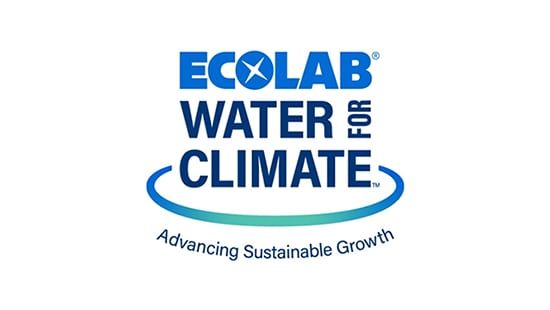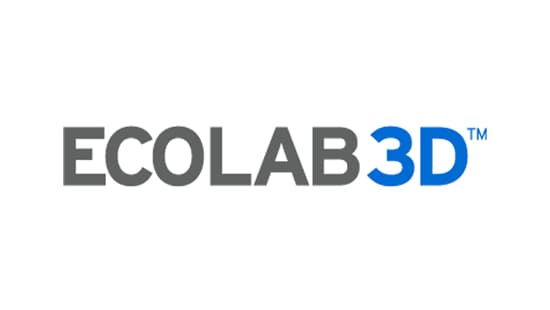Analizamos la situación de la administración del agua en la era de la IA
El mundo está experimentando una creciente demanda en el uso de la energía y el agua, impulsada principalmente por tecnologías transformadoras como la IA, así como por fenómenos meteorológicos extremos y una economía en evolución.
- Para 2030, se estima que el crecimiento relacionado con la IA demandará energía adicional equivalente a las necesidades anuales de la India1 y la misma cantidad de agua para satisfacer las necesidades anuales de agua potable de los Estados Unidos2.
- En 20273, los centros de datos podrían utilizar más de 1 billón de galones de agua dulce al año.
- Se prevé una brecha del 56% entre el suministro y la demanda de agua dulce para 20304 y se prevé que la demanda de agua aumente hasta un 30% para 20505.
Como líder mundial en sostenibilidad, Ecolab ayuda a resolver estos retos relacionados con el agua. Nuestro estudio de 2025 proporciona información sobre las últimas percepciones y preocupaciones sobre el agua, y orienta a las empresas, los gobiernos y las organizaciones sin fines de lucro a desarrollar estrategias de agua efectivas. Comprender la percepción pública es esencial para ayudar a dar a conocer estas estrategias y avanzar hacia un futuro con seguridad hídrica.
Principales conclusiones del Estudio Ecolab Watermark 2025
Agua: el coste oculto y la oportunidad de la IA
Si bien muchos consumidores reconocen el gran consumo de energía de la IA, pocos son conscientes de su importante huella hídrica. Esta brecha de conocimiento es particularmente notable en Asia Pacífico, IMEA y América Latina.
Percepciones de los consumidores sobre el grado en que cada recurso se utiliza actualmente para respaldar las operaciones de IA:

China
81% Energía
77% de agua

IMEA
78% Energía
61% Agua

Latinoamérica
68% Energía
51% Agua

Asia-Pacífico
60% Energía
43% Agua

Europa
59% Energía
46% Agua

United States
55% Energía
46% Agua
Los datos ilustran los porcentajes de acuerdo:
Las empresas deben aprovechar la IA
para un uso responsable de los recursos naturales
Confianza en las empresas para gestionar las demandas de energía de las operaciones de IA de manera responsable

IMEA
2026
76%
63%

China
2026
72%
77%

Latinoamérica
70%
49%

Europa
2026
54%
37%

Asia-Pacífico
51%
37%

United States
49%
39%

Gestión inteligente del agua: los consumidores quieren que las empresas reutilicen el agua de forma inteligente
A pesar de la creencia generalizada de los consumidores de que las empresas deben priorizar la gestión inteligente del agua para hacer frente a la escasez de agua, cada vez son menos las personas que consideran que estas empresas están poniendo en práctica soluciones de reutilización del agua con éxito.
Porcentaje de consumidores que creen que las empresas están reduciendo, reutilizando, reciclando, restaurando y recuperando agua en todas sus operaciones diarias.

United States
43%

Europa
44%

Latinoamérica
48%

Asia-Pacífico
48%

IMEA
67%

China
74%
Existe un consenso generalizado entre los consumidores de todo el mundo:
Las empresas deben priorizar las inversiones en tecnologías e infraestructuras para reforzar la resiliencia de los recursos hídricos.
para proteger los recursos hídricos del cambio climático:

Latinoamérica
84%
85%

IMEA
2026
82%
82%

China
2026
77%
76%

Europa
2026
72%
71%

Asia-Pacífico
71%
70%

United States
68%
67%
Las empresas que demuestren prácticas responsables con el agua pueden esperar un gran interés por parte de los consumidores.
Porcentaje de consumidores dispuestos a
buscar activamente más información
de estas empresas:

Latinoamérica
82%

IMEA
2026
78%

China
2026
68%

Asia-Pacífico
61%

Europa
2026
61%

United States
61%
Asociaciones por el agua
Ninguna entidad puede hacer frente a los retos del agua por sí sola. Al forjar asociaciones poderosas, las empresas, los gobiernos y las comunidades pueden acelerar la acción coordinada para encontrar soluciones y construir un futuro con mayor resiliencia al agua para todos.
En la mayoría de las regiones, los consumidores tienen negocios, incluyendo fabricantes) y gobiernos igualmente responsables de la conservación del agua. Sin embargo, ambos aún enfrentan críticas por no contribuir lo suficiente en comparación con los individuos, las organizaciones sin fines de lucro y las organizaciones conservacionistas.
Los siguientes datos detallan las percepciones de los consumidores sobre cuánto ha hecho cada entidad hasta la fecha para conservar el agua en su país:

Latinoamérica
42% Empresas
55% Individuos
48% Gobierno
60% Organizaciones sin fines de lucro

Europa
2026
45% Empresas
56% Individuos
45% Gobierno
54% Organizaciones sin fines de lucro

United States
47% Empresas
58% Individuos
48% Gobierno
56% Organizaciones sin fines de lucro

Asia-Pacífico
2026
48% Empresas
49% Individuos
46% Gobierno
50% Organizaciones sin fines de lucro

IMEA
2026
63% Empresas
69% Individuos
79% Gobierno
67% Organizaciones sin fines de lucro

China
2026
80% Empresas
79% Individuos
84% Gobierno
79% Organizaciones sin fines de lucro
A pesar de los retos globales del agua, los consumidores se muestran muy optimistas sobre nuestra capacidad para afrontarlos.
Una mayoría rotunda, más del 60% de los consumidores de todas las regiones, cree que la escasez de agua
puede abordarse de manera efectiva.
La medida en que los consumidores
están de acuerdo en que la escasez de agua
puede abordarse de manera efectiva:

Latinoamérica
84%

IMEA
2026
83%

China
2026
73%

United States
67%

Europa
2026
66%

Asia-Pacífico
61%
Eventos climáticos extremos
Los consumidores perciben que los cambios en el clima y el aumento de los desastres naturales agravan el estrés hídrico.
lo que genera desafíos tanto en la disponibilidad como en la calidad del agua.
Porcentaje de consumidores que relacionan el cambio climático con el empeoramiento del estrés hídrico:

IMEA
2026
81%

China
2026
80%

Latinoamérica
79%

Asia-Pacífico
2026
69%

Europa
2026
69%

United States
65%
Los consumidores exigen claramente que se tomen medidas contra el cambio climático, con grandes expectativas
en el liderazgo corporativo y gubernamental.
Porcentajes de consumidores que consideran
que es muy importante que gobiernos y empresas prioricen sus esfuerzos para disminuir
el impacto del cambio climático:

Latinoamérica
87%
88%

IMEA
2026
81%
81%

China
2026
76%
77%

Europa
2026
71%
71%

Asia-Pacífico
70%
69%

United States
67%
67%
Tendencias anuales notables
Dado que el acceso al agua limpia y segura sigue siendo un problema mundial crítico, los niveles de preocupación de los consumidores son notables.
La preocupación de los consumidores por el agua limpia y segura, desglosada por región:

China
2026
96%

Latinoamérica
92%

United States

Europa
2026
69%

IMEA
2026
67%

Asia-Pacífico
2026
63%
Los consumidores de la mayoría de las regiones identifican de forma coherente la agricultura y
la fabricación de alimentos y bebidas como las industrias más responsables del uso del agua.
Agricultura
Alimentos y bebidas

IMEA
2026
52%
37%

Latinoamérica
48%
44%

Asia-Pacífico
47%
36%

Europa
2026
47%
33%

United States
43%
31%

China
2026
29%
28%
Administración del agua mejorada
Ecolab lleva más de 100 años trabajando en la protección de los recursos vitales para la vida priorizando la administración del agua en nuestras operaciones y las operaciones de nuestros clientes. En más de 40 industrias en todo el mundo, Ecolab ha ayudado a las empresas a hacer frente a los retos del agua y el clima minimizando su consumo de agua en los procesos críticos. Al alinear los objetivos de crecimiento empresarial con el clima y el agua, ayudamos a nuestros clientes a causar un impacto duradero y a obtener un retorno de la inversión exponencial (eROI).
Nuestras soluciones
Con una gestión de más de un billón de galones de agua al año, Ecolab combina la Connected Chemistry™
con datos digitales y su experiencia en la industria para aunar sostenibilidad y crecimiento.
Obtenga más información acerca de cómo Ecolab puede ayudarle a adoptar un enfoque inteligente de la gestión del agua en sus operaciones.

Identificar oportunidades con Smart Water Navigator

Adoptar un enfoque de empresa con Ecolab Water for Climate™

Gestione el rendimiento del agua con la tecnología 3D TRASAR™

Visualice los datos con los servicios digitales ECOLAB3D™
Nuestros proyectos
Cuando se aborda la resiliencia del agua, las empresas pueden prosperar. Los siguientes casos prácticos ponen de manifiesto cómo Ecolab genera un impacto positivo en los objetivos empresariales, del agua y climáticos de nuestros clientes:
Nuestras asociaciones
Nuestras asociaciones con organizaciones no gubernamentales (ONG) líderes refuerzan nuestros conocimientos y nuestras capacidades para hacer frente a los retos globales de nuestras empresas, nuestros clientes y nuestras comunidades. Estos incluyen:
- Bloomberg Law, "AI Computing on Pace to Consume More Energy Than India, Arm Says", abril de 2024: news.bloomberglaw.com/artificial-intelligence/ai-computing-on-pace-to-consume-more-energy-than-india-arm-says↵
- Análisis de Ecolab de los datos de Lei, N., & Masanet, E. (2022) y Goldman Sachs (2024)↵
- Making AI Less “Thirsty”: Uncovering and Addressing the Secret Water Footprint of AI Models: www.goldmansachs.com/insights/articles/AI-poised-to-drive-160-increase-in-power-demand and TIME, “How AI Is Fueling a Boom in Data Centers and Energy Demand”: time.com/6987773/ai-data-centers-energy-usage-climate-change/↵
- World Resource Institute: “Setting Enterprise Targets: Modeling Downstream Water Use and Consumption”: Setting Enterprise Targets: Modeling Downstream Water Use and Consumption | World Resource Institute↵
- World Resource Institute, “Securing Freshwater for All”: www.wri.org/freshwater↵


